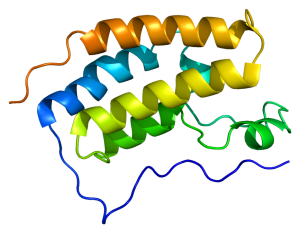
One of the more exciting reporter molecules technologies available came online in the past year, with the launch of the Promega NanoBRET™ technology. While it’s easy for me, a science writer at Promega, to brag, seriously, this is a very cool protein interactions tool.
A few of the challenges facing protein-protein interactions researchers include:
- The ability to quantitatively characterize protein-protein interactions
- Ability to examine protein-protein interactions in situ, in the context of the living cell
A goal of the NanoBRET™ developers was to improve the sensitivity and dynamic range of traditional BRET technology, in order to address these challenges.
In May 2015 these researchers published an article outlining their efforts to create NanoBRET technology in ACS Chemical Biology, in an article entitled, “NanoBRET—A Novel BRET Platform for the Analysis of Protein-Protein Interactions”. Here is a brief look at their work.
BRET (bioluminescence resonance energy transfer) has been used to examine protein-protein interactions by energy transfer for 10–15 years, but has been limited in usefulness by its lack of sensitivity and dynamic range. BRET originally employed Renilla luciferase (Rluc) and fluorescent energy acceptor molecules such as YFP or various GFP molecules. However, the spectral proximity of Rluc and YFP produced backgrounds too high to make a sensitive assay, and the GFP-associated BRET showed poor luminescence stability.
The engineered Nanoluc® luciferase (Nluc) is a 19kDa protein with a novel coelenterazine derivative (furimazine) as a substrate. The small size of Nluc and its stable profile make it ideal as a fusion tag, with a minimum of influence on the proteins to which it is attached. Nluc produces sustained luminescence of greater intensities that the Renilla luciferase used in traditional BRET assays.
To denote the unique Nluc-BRET energy donor pairing, the developers named the technology NanoBRET.
In the ACS publication the authors describe the second step in NanoBRET™ development, choosing the best fluorescent energy acceptor. You should read the article for details, but a note that HaloTag®-NCT was determined to be an optimal energy acceptor for Nluc. It should also interest protein-protein interaction researchers that labeling the HaloTag® fusion with NCT is simple.
To test the NanoBRET™ Assay in quantification of intracellular protein interactions, the authors looked at bromodomain interactions, an area that is currently getting a lot of attention from cancer (and other) disease researchers.
The authors studied the interaction of BRD4 and chromatin by expressing Nluc-BRD4 in mammalian cells with human histone H3.3-HT fusions. Cells were treated with increasing doses of inhibitor I-BET151, which competes for binding to acetyl-lysine. The results showed a dose-dependent decrease in BRET signal with an IC50 that approached known values. When they tested a non-BET family bromodomain protein, CBP, they found no displacement from chromatin with I-BET151.
Finally, the researchers demonstrated one of the most exciting features of NanoBRET , the bright signal from Nluc luciferase, which enables the ability to image BRET in individual cells.
Here is the reference:
Wood, K.V. et al. (2015) NanoBRET—A Novel BRET Platform for the Analysis of Protein-Protein Interactions. ACS Chem. Biol. 10, 1797–1804.
Have you worked with NanoBRET™ technology? We’d love to hear about your work. Please comment here.
Kari Kenefick
Latest posts by Kari Kenefick (see all)
- Base Editing Brilliance: David Liu’s Breakthrough Prize and Its Impact - May 28, 2025
- Neurons’ Role in FBP2 Regulation - October 24, 2024
- Fluorescent Ligands in Biological Research: Where We’ve Been, Where We’re Headed - June 27, 2024

One thoughtful comment